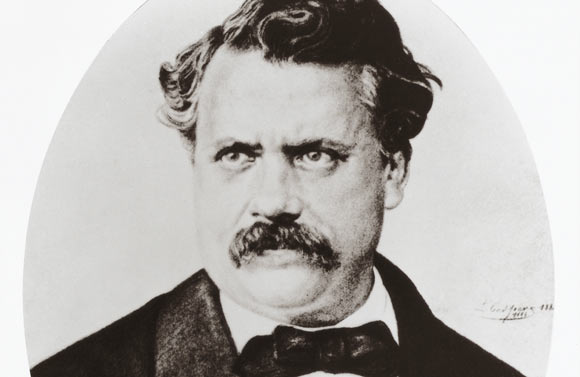
The world knows that some brands provide high quality fashion products and one such well-known brand is named after the French entrepreneur, Louis Vuitton. He was not only a businessman, but a designer as well. Before establishing this world famous company, he use to make trunks for Napoleon‘s wife.
Vuitton belonged to a laboring-class family and his ancestors were milliners, farmers, carpenters and joiners unlike him. At the age of ten, his mother died and father remarried soon. Vuitton’s stepmother was harsh, wicked and severe just like the one seen in Cindrella. However, he was a headstrong and willful child, who escaped, from his stepmother’s antagonizing, to Paris in 1835 when he was fourteen years old.
Along the way to the city from his hometown Anchay, Vuitton did several unusual jobs to gather enough money for his food. He rested wherever he found shelter. It took him two years to reach the capital of France. At the time, the city was surrounded by the different effects of the industrial revolution – some were good like rapid development of the city, and some were as bad as a distressing plague and dismal poverty.
In Paris, Vuitton in his teenage years worked as a trainee in Monsieur Marechal‘s workshop of box making and packing. This was a highly respectable craft in nineteenth century Europe. In a few years, Vuitton became one of the best practitioners of this new skill among the fashion lovers of Paris.
In 1852, Louis Vuitton benefited a lot from the restoration of the French Kingdom under the rule of Napolean III. His wife Eugenie de Montijo, France’s Empress hired Louis Vuitton to work privately as her box packer and maker. This wonderful opportunity became a doorway to success for Vuitton and he received assignments from royal and elite clientele throughout his life.
Two years later, Vuitton got married to Clemence-Emilie Parriaux. When he left Marechal’s shop, he opened his own shop of the same business of box manufacturing. In 1958, he introduced a revolutionary shaped trunks to the market and it became a hit. The new design was loved and the demand increased for these convenient and innovative trunks so much that Vuitton expanded his workshop and business in Paris.
In 1867 at Exposition Universelle, Vuitton won a bronze medal. It was an international show which Napolean organized in Paris and it further accelerated Vuitton’s work popularity. However, Vuitton’s shop was destroyed and looted between 1870 and 71. This happened while the Franco-Prussian War was in progress and once it ended, Vuitton re-established his workshop in an upper-class area in Paris.
In 1872, he introduced a new design of trunks with a red and beige stripe. The elite class Parisians were attracted to Louis Vuitton’s latest creation and his brand sustained a position as offering luxurious and quality trunks.
In 1889, he was given a grand prize and a gold medal at the same event, Exposition Universelle. This again strengthened Vuitton’s position in the market and boosted his work’s popularity.
With his commitment, aesthetic sense and business skills, Vuitton kept on working until his death in 1892. He left his company over the shoulders of his son, Georges Vuitton.
His son carried on his father’s tradition by introducing innovative designs of trunks to the market. Today the Louis Vuitton brand offers additional things than just trunks, including leather accessories and fashion goods, like bags, shoes, sunglasses and much more.